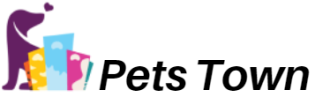Let us take a look at some of the interesting facts:
- The US Bureau of Labor and Statistics has predicted 27% job growth for developers by the year 2024.
- The term ‘full stack’ was first used by Randy Schmidt in 2008 to describe web developers who could do design, styling, markup, and programming.
- Becoming a full-stack developer requires one to have deep expertise in both front-end and back-end technologies and broad experience.
- The Jobs on the Rise report by LinkedIn mentions the highest percentage of remote job openings for specialized engineers (including full-stack developers) compared to other roles.
Looking at all the above stats, you can infer how rewarding a career would be as a full-stack web developer. It is becoming a crucial segment of the developer population worldwide. Basically, a full-stack developer can build a fully functional web application. While earlier we had separate developers for front-end and back-end development, full-stack developers can work on both sides and require little to no external assistance in their work. The unique advantage of this type of web development is that it combines two important parts of computer programming into one professional. In fact, companies are now interested in hiring full-stack developers as it can save their costs.
Looking at what a full-stack web developer means, you may obviously think that it would be better for a professional to gain some experience as a front-end developer, then a back-end developer, and finally move on to a full-stack developer role. But what if an individual wishes to start a full-stack web development career directly? Can a beginner learn full-stack web development? Well, with a full-stack development for beginners course, an individual can start a career directly in this domain.
Curious to know more about this step? If yes, then this article is for you. You will understand how a beginner can learn full-stack web development and start a promising career in this field.
Taking the First Step in Full-Stack Web Development
Learning full-stack web development can be easy if you have an interest in the field and love performing practicals after going through theoretical concepts. The first thing that matters for a beginner is the educational background. The ideal qualification for an entry-level full-stack developer is a bachelor’s degree in computer science, information technology, or related fields. This is because you become familiar with the languages, technologies, and other areas covered in web development. Polishing your skills is what is required for a full-stack developer role.
On the other hand, people from non-IT backgrounds may take some more time grasping the concepts of full-stack development. This doesn’t mean that they can’t think of this career option. If one has good programming skills and an interest to learn more, then a training program would help you gain the right skills. As you will start from scratch, it may take you some more time but the instructors will ensure that you become job-ready by the end of the training program.
Skills Required
As there are so many technical skills to gain as a full stack developer, you can start with front-end technologies. Learn about the languages like HTML, CSS and JavaScript. Once you are familiar with writing codes in these languages, start with the front-end frameworks like Angular and React. Next, you can practice front-end development for some days and reinforce your learning.
The next step is to explore the back-end development process. Back-end technologies include Java, Python, PHP, and SQL. You don’t have to master all of them, but just gain a basic understanding of them. Achieve proficiency in any one language of your choice or the one that is widely used in current times. When you select a particular language, go through its data structures and algorithms as well. As a beginner, we would recommend you to prefer the Python language. Next, move on to back-end frameworks like Node.js, Express, Laravel, or Spring MVC. Again, practice back-end development for some days and build a strong foundation in this part of web development.
Next comes the knowledge of databases. There are many databases available in the market like MySQL, MongoDB, Azure Cloud DB, PostgreSQL, Redis, and more. As a beginner, we would recommend you to begin with relational databases like MySQL and PostgreSQL as these are still the most widely used databases among organizations. Apart from databases, knowledge of servers and their functioning, web-hosting environments, networking, algorithms and their formulations is beneficial.
Finally…
It is important to note that you don’t need to become well-versed in using all the front-end and back-end technologies and programming languages. You just need to be familiar with all of them, but gain mastery in any one of them. MEAN Stack, for example, is a full-stack developer who works with four technologies namely MongoDB, Express, Angular, and Node.js. Apart from these technologies, he doesn’t need to acquire skills in all other languages and technologies.
If these skills are tough to develop through independent study, the doors of online courses are always open for you. All you need to do is select an appropriate training provider and enroll in their in-depth full-stack web development course. All other things will be taken care of by them.

